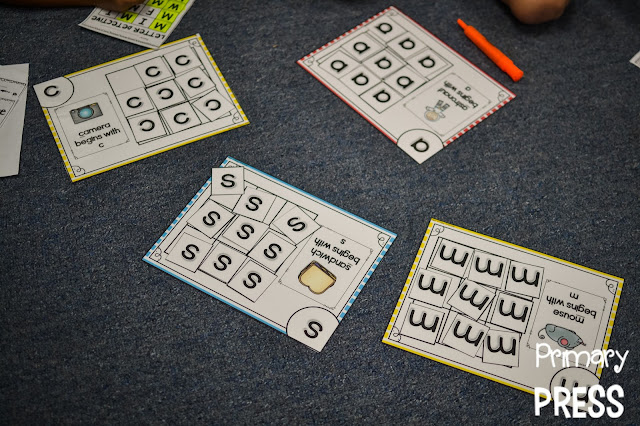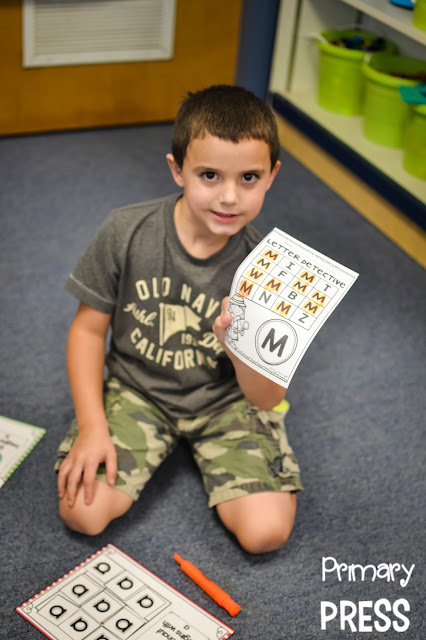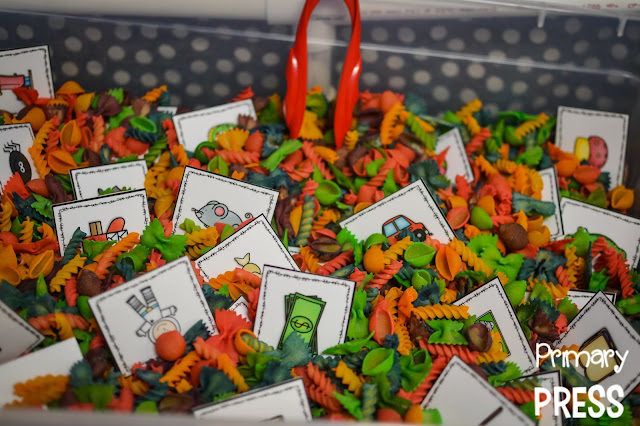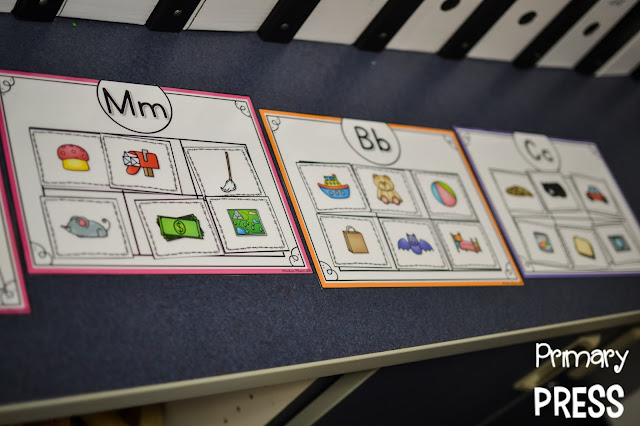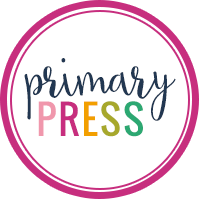Recently, I've been talking a lot with my friend, Kristen {A Day in First Grade}, about what play looks like in our classroom, and how we're incorporating more play based, inquiry activities into our day. Now, she has been doing some great research, and is far ahead of me, but I'm super excited about the steps I'm taking to make exploration and wonder a part of my classroom. While I strive to let my kids have time at free choice play centers every afternoon, that was basically all I was doing when it came to play. I decided the first area I wanted to change in my classroom was morning work.
Up until now, I've always used some type of worksheet or journal for morning work {and if that's what works for your class, that's fine!}. However, this year, I felt that it just didn't set the tone for the kind of day I wanted us to have, and my kids were very restless afterwards. So, after talking with Kristen and my sister, I sat down and made a list of some things we could do instead of morning work, and exploration boxes were born. Basically, I went to the Dollar Tree and Wal-Mart and bought whatever I thought looked like something my students could use to practice fine motor, but that could be left open-ended. I also bought 20 plastic shoe boxes from Wal-Mart because I wanted each student to be working with their own exploration box. Because I'm extremely impatient, I do have a little bit of money in these boxes and materials. You could definitely ask for donations, write a grant, etc. to get the materials you would need for the boxes.
Right now, I have 5 different types of activities in the boxes {so each table of 4 kids is working on the same thing}. Some are seasonal, and I'll change them out every month or so. When my students come in, the boxes are already sitting at their table, and quiet music is playing. They unload their bookbags, then get busy at their box. The only directions I gave them was that they were to work independently and the materials had to stay on the table. It's up to them whether they make a pattern, make a shape, count, etc.
The first set of boxes is super simple - nuts and bolts. I bought a variety of sizes in the hardware department and they are awesome fine motor practice. My kids are so concentrated when they're working with them!
The second activity is lacing. I don't have actual laces in my boxes yet, so I'm using pipe cleaners {which actually work well}. Two boxes have wooden beads, one box has buttons, and one box has letter beads. I grabbed what Wal-Mart had on the clearance aisle. The kids don't have to lace the beads/buttons if they don't want to - they can make a pattern, count them, whatever they like. Most lace them on the pipe cleaners though.
The third activity I have in the boxes is play-doh. My kids love play-doh, and it really is great for working on fine motor. I put 2 small containers in each box, along with some tools I ordered on Amazon.
As a seasonal activity, I found these mini jack-o-lanterns and Halloween colored pom-poms at the Dollar Tree. I threw in some tweezers I already had, and my kids so far have been using them to transfer the pom-poms. I'm waiting to see if any of them will start using them to make patterns.
In the last set of boxes, I simply put some decorative stones I got from the Dollar Tree. I also put in some alphabet cards if the kids wanted to practice making letters. I love how creative some of my kids got with these - especially the pyramid!
By the end of the week, each child will have had an opportunity to use each of the 5 boxes. This was only our second time with the boxes, but I hope the kids continue to love them as much as they already have!
**If you follow my Facebook page, you can check out a video of my kids in action with the boxes.
Up until now, I've always used some type of worksheet or journal for morning work {and if that's what works for your class, that's fine!}. However, this year, I felt that it just didn't set the tone for the kind of day I wanted us to have, and my kids were very restless afterwards. So, after talking with Kristen and my sister, I sat down and made a list of some things we could do instead of morning work, and exploration boxes were born. Basically, I went to the Dollar Tree and Wal-Mart and bought whatever I thought looked like something my students could use to practice fine motor, but that could be left open-ended. I also bought 20 plastic shoe boxes from Wal-Mart because I wanted each student to be working with their own exploration box. Because I'm extremely impatient, I do have a little bit of money in these boxes and materials. You could definitely ask for donations, write a grant, etc. to get the materials you would need for the boxes.
Right now, I have 5 different types of activities in the boxes {so each table of 4 kids is working on the same thing}. Some are seasonal, and I'll change them out every month or so. When my students come in, the boxes are already sitting at their table, and quiet music is playing. They unload their bookbags, then get busy at their box. The only directions I gave them was that they were to work independently and the materials had to stay on the table. It's up to them whether they make a pattern, make a shape, count, etc.
The first set of boxes is super simple - nuts and bolts. I bought a variety of sizes in the hardware department and they are awesome fine motor practice. My kids are so concentrated when they're working with them!
The second activity is lacing. I don't have actual laces in my boxes yet, so I'm using pipe cleaners {which actually work well}. Two boxes have wooden beads, one box has buttons, and one box has letter beads. I grabbed what Wal-Mart had on the clearance aisle. The kids don't have to lace the beads/buttons if they don't want to - they can make a pattern, count them, whatever they like. Most lace them on the pipe cleaners though.
The third activity I have in the boxes is play-doh. My kids love play-doh, and it really is great for working on fine motor. I put 2 small containers in each box, along with some tools I ordered on Amazon.
As a seasonal activity, I found these mini jack-o-lanterns and Halloween colored pom-poms at the Dollar Tree. I threw in some tweezers I already had, and my kids so far have been using them to transfer the pom-poms. I'm waiting to see if any of them will start using them to make patterns.
In the last set of boxes, I simply put some decorative stones I got from the Dollar Tree. I also put in some alphabet cards if the kids wanted to practice making letters. I love how creative some of my kids got with these - especially the pyramid!
By the end of the week, each child will have had an opportunity to use each of the 5 boxes. This was only our second time with the boxes, but I hope the kids continue to love them as much as they already have!
**If you follow my Facebook page, you can check out a video of my kids in action with the boxes.


















